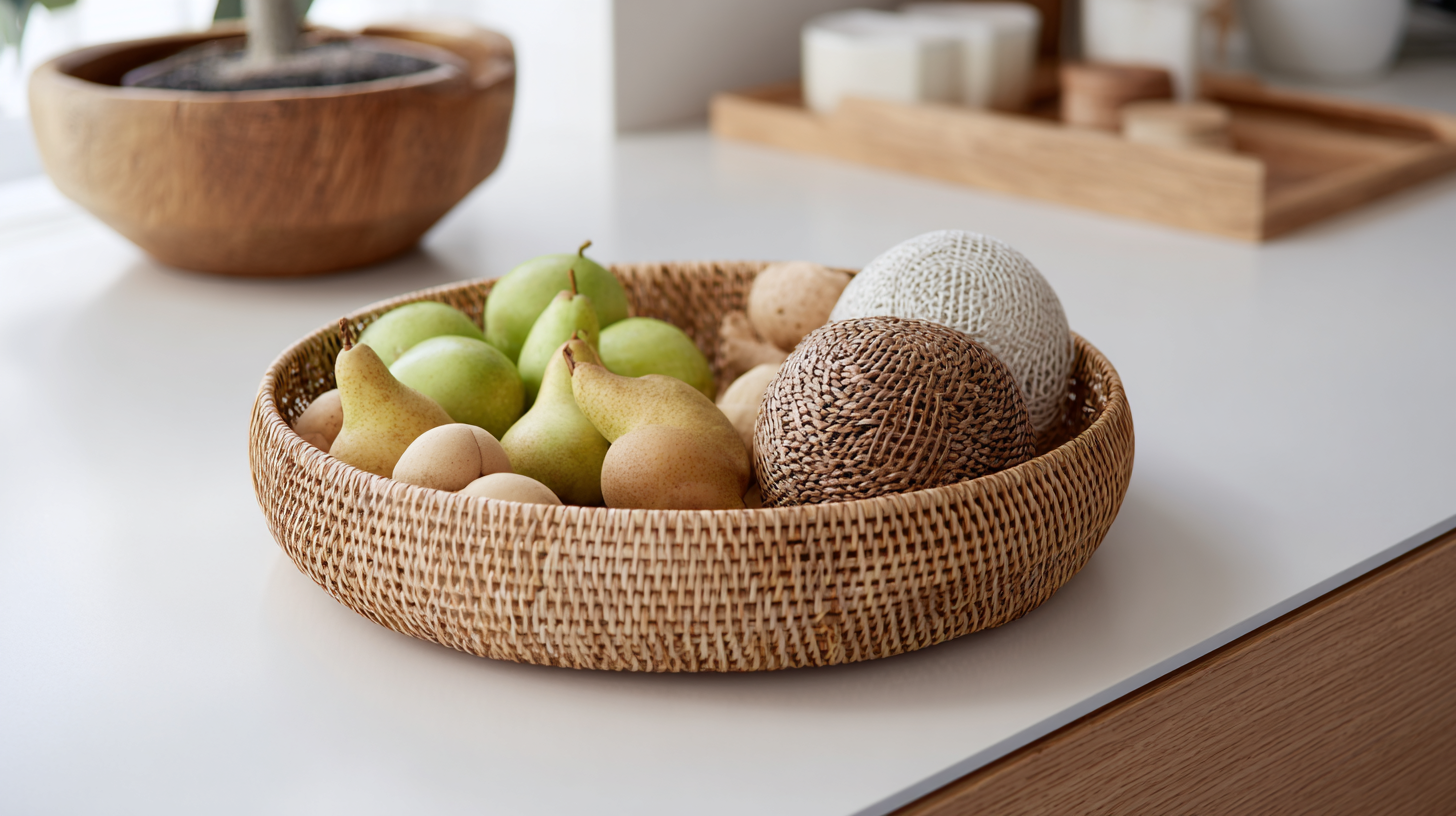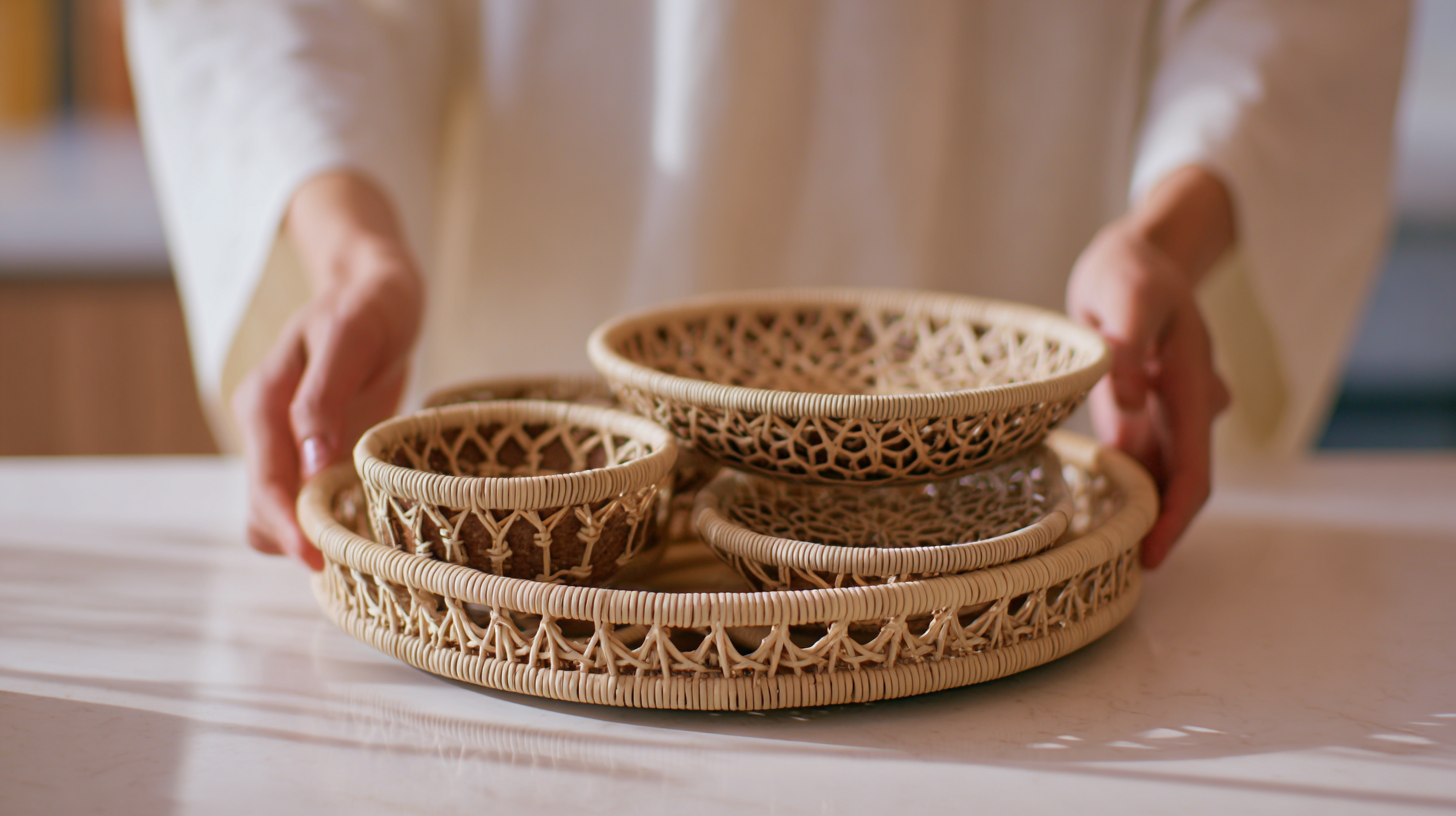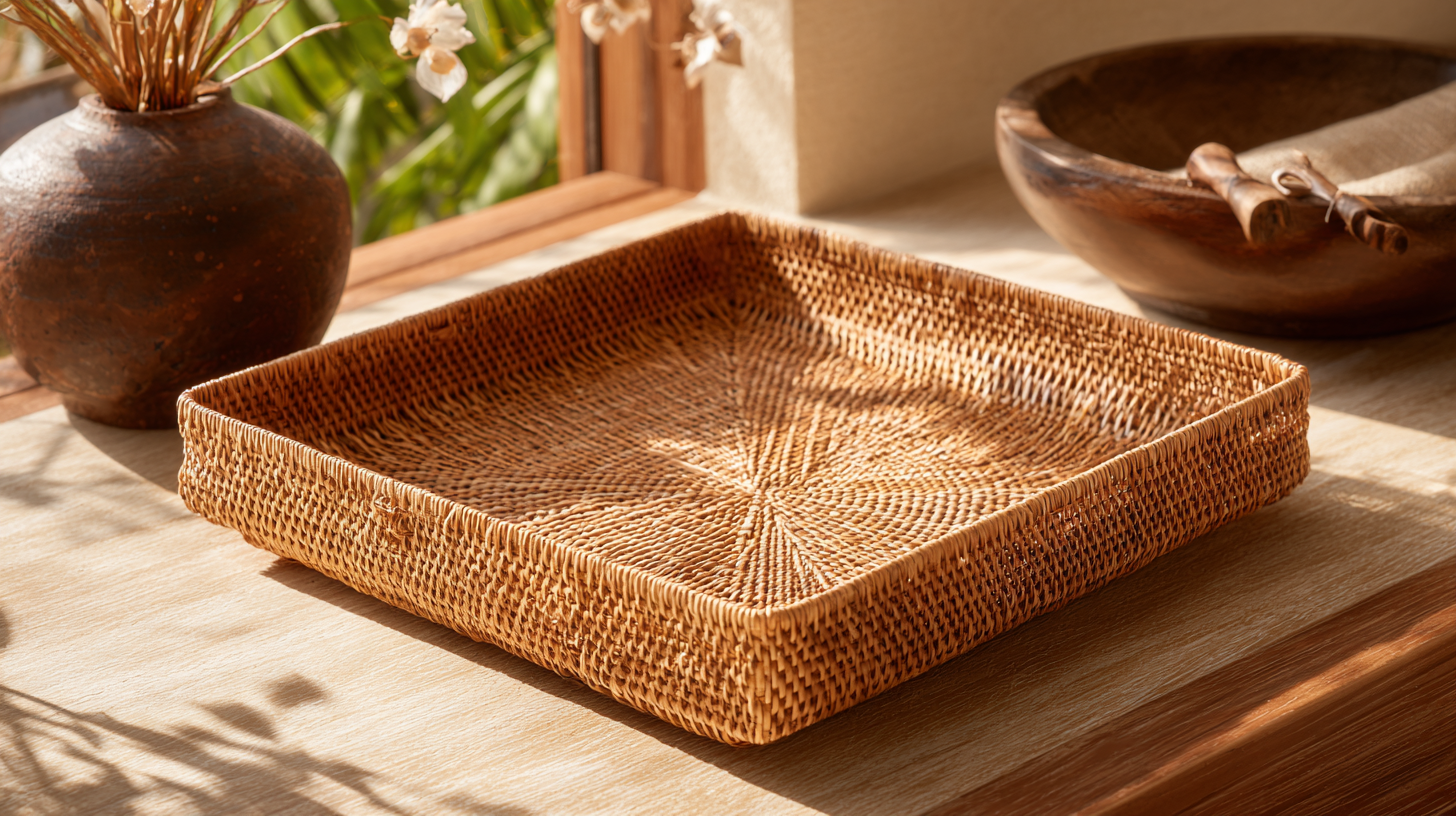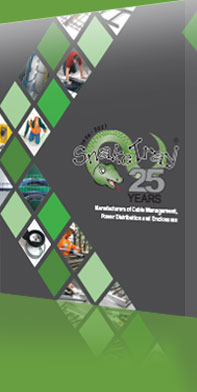The Future of Sustainable Design with Basket Trays
As the world increasingly prioritizes sustainability, innovative design solutions are becoming essential in shaping the future of architecture and interior spaces. One such solution, the basket tray, is gaining traction among designers for its versatility and eco-friendly attributes. According to a recent report by the World Green Building Council, sustainable design practices can reduce energy consumption in buildings by up to 40%. By incorporating elements like basket trays, which are often made from recycled materials and promote efficient product organization, designers can contribute to a reduction in waste and resource use.

The trend towards sustainable materials is not only a response to consumer demand, with 72% of millennials expressing a preference for eco-friendly products (Nielsen, 2020), but also a necessary shift towards minimizing our carbon footprint. This blog will explore how basket trays can be effectively utilized in sustainable design, providing practical tips and inspiring ideas for both residential and commercial spaces.
Exploring the Ecological Benefits of Basket Trays in Sustainable Design
In recent years, the design industry has made significant strides toward sustainability, with basket trays emerging as a key element in this movement. These trays not only offer practical solutions for organization and decor, but they also present a host of ecological benefits. Made from natural materials like wicker or bamboo, basket trays avoid the use of synthetic materials, which can contribute to pollution and waste. Their biodegradable nature means they can return to the earth at the end of their life cycle, unlike plastic alternatives.
When integrating basket trays into your design, consider prioritizing local artisans who use sustainable harvesting methods. This not only supports the community but also reduces the carbon footprint associated with transportation. Furthermore, look for trays that are handcrafted, as they often come with a unique character and story that mass-produced items lack.
Tips for incorporating basket trays effectively include using them to organize personal spaces, such as homes or offices, promoting an orderly and aesthetically pleasing environment. Additionally, consider using different sizes and shapes of trays to create visual interest; layering them can bring depth to your decor while showcasing their natural beauty. Employing these sustainable design elements not only enhances your space but also contributes to a greater ecological purpose.
The Future of Sustainable Design with Basket Trays - Exploring the Ecological Benefits of Basket Trays in Sustainable Design
| Dimension | Description | Ecological Benefit | Sustainability Aspect |
|---|---|---|---|
| Material | Natural fibers like bamboo, seagrass, or rattan | Biodegradable and renewable resources | Reduces reliance on plastic |
| Production Process | Handcrafted techniques vs. mass production | Lower carbon footprint | Supports fair trade and local economies |
| End of Life | Can be composted or recycled | Reduces waste in landfills | Encourages circular economy practices |
| Functionality | Versatile use in home decor and organization | Promotes sustainable living practices | Encourages minimalism and reduction of unnecessary items |
| Aesthetic Appeal | Natural and earthy designs | Enhances connection to nature | Supports eco-friendly design trends |
Innovative Materials: Choosing Eco-Friendly Options for Basket Trays
As the demand for eco-friendly products continues to rise, the selection of innovative materials for basket trays has never been more crucial. According to a report by Smithers, the market for sustainable materials is projected to reach $645 billion by 2029, driven by increasing awareness of environmental concerns and changing consumer preferences. This trend emphasizes the importance of sourcing materials that not only perform well but also leave a minimal ecological footprint.
 When designing basket trays, manufacturers are increasingly turning to alternative materials such as bamboo, recycled plastics, and organic cotton. For instance, a survey conducted by the Materials Research Society indicates that bamboo's tensile strength and rapid growth make it a highly sustainable choice, with potential reductions in carbon emissions during production by over 30%. Similarly, using recycled plastics helps divert waste from landfills while minimizing the need for virgin materials, creating an impressive circular economy model within the home decor industry. By prioritizing these eco-friendly options, designers can effectively contribute to a more sustainable future while meeting the evolving demands of environmentally conscious consumers.
When designing basket trays, manufacturers are increasingly turning to alternative materials such as bamboo, recycled plastics, and organic cotton. For instance, a survey conducted by the Materials Research Society indicates that bamboo's tensile strength and rapid growth make it a highly sustainable choice, with potential reductions in carbon emissions during production by over 30%. Similarly, using recycled plastics helps divert waste from landfills while minimizing the need for virgin materials, creating an impressive circular economy model within the home decor industry. By prioritizing these eco-friendly options, designers can effectively contribute to a more sustainable future while meeting the evolving demands of environmentally conscious consumers.
Practical Applications: Integrating Basket Trays into Everyday Spaces
 Basket trays, often overlooked as mere decorative items, are emerging as practical solutions for sustainable design in modern interior spaces. According to the Global Sustainability Report 2022, the use of sustainable materials in home decor has increased by 30% over the past five years, reflecting a significant shift towards eco-friendly design choices. By integrating basket trays made from organic fibers, designers not only provide functional storage options but also contribute to reducing overall environmental impact.
Basket trays, often overlooked as mere decorative items, are emerging as practical solutions for sustainable design in modern interior spaces. According to the Global Sustainability Report 2022, the use of sustainable materials in home decor has increased by 30% over the past five years, reflecting a significant shift towards eco-friendly design choices. By integrating basket trays made from organic fibers, designers not only provide functional storage options but also contribute to reducing overall environmental impact.
Incorporating basket trays into everyday living spaces can help enhance organization while maintaining aesthetic appeal. These versatile pieces can be used in various settings—from the kitchen for storing fruits and vegetables to the living room for managing remote controls and magazines. A recent survey by Interior Design Magazine found that 75% of consumers prefer adjustable and multifunctional furniture and accessories in their homes, highlighting the growing trend of optimizing space without compromising style. By embracing the practical applications of basket trays, we can create harmonious environments that prioritize sustainability and functionality, aligning with consumer demands for conscious living.
Design Techniques: Elevating Aesthetics with Sustainable Basket Tray Design
Sustainable design is rapidly evolving, and the integration of
basket trays into interior aesthetics is a prime example of this transformation.
Developed with eco-friendly materials, these trays not only serve practical purposes but also elevate the visual appeal of
any space. Designers are embracing natural fibers, such as rattan, jute, and bamboo,
to create unique textures and patterns that reflect a commitment to sustainability while adding warmth and character to
homes and offices.
Innovative design techniques are key to enhancing the aesthetics of basket trays. By experimenting with varied weaves, colors,
and sizes, designers can craft pieces that resonate with diverse decor styles, from bohemian chic
to minimalist elegance. The use of organic dyes allows for customization
that aligns with sustainable practices, ensuring that each tray not only looks stunning but also tells a story of environmental
consciousness. As the trend towards sustainable decor continues to grow, basket trays emerge not only as functional items but
as versatile art pieces that redefine modern aesthetics.
Community Impact: Promoting Local Artisans in Basket Tray Production
The resurgence of basket tray production not only embraces sustainable design but also significantly impacts local communities by promoting artisanship. According to a report by the World Craft Council, the global crafts market is valued at approximately $300 billion, with a substantial portion attributed to handmade goods. This emphasis on local craftsmanship fosters economic empowerment, as communities that engage in traditional basket weaving can experience up to a 50% increase in income compared to less skilled labor.
Incorporating basket trays into sustainable design practices not only enhances aesthetic appeal but also supports ethical production methods. A study by the Ellen MacArthur Foundation emphasizes the importance of circular economies, which encourage local sourcing and minimal waste. By using basket trays crafted by skilled artisans, designers not only prioritize sustainability but also create a direct connection between the consumer and the maker. This relationship not only brings awareness to the cultural significance of the craft but also supports the preservation of traditional skills that might otherwise be lost in mass production.
